From Yellow Flowers to a Yellow Throat
My last post featured the yellow flowers but now.....
The National Audubon Society describes the Common Yellowthroat as "abundant and well-known" and "found in practically every reed-bed and patch of cattails from coast to coast." Despite that description, it is not easy to catch more than a glimpse of a Common Yellowthroat due to their propensity to hide deep in the reeds and vegetation and due to their behavior of constantly bouncing around in that vegetation- rarely coming out into the open for more than a milli-second. However, just this once……
I was at Lakeside Park recently. While walking near the marshy end of the lake behind the cattails, I was thrilled to see a Common Yellowthroat appear out in the open, beyond the reeds, and proceed to hunt for food. I had never had such long and unobstructed views of a Common Yellow throat before.
Yellowthroats are, indeed, "common" among the edges of wetlands, riparian areas and brushy fields in southern Arizona, but they usually are heard more than they are seen. Listen to their unique "witchety-witchety-witchety" song in this Birdnote piece:
https://tinyurl.com/CommonYellowthroat
The Common Yellowthroat is a warbler and the male has a dark black mask set against its yellow throat and belly. It has a white unibrow above the mask. Female and immature Common Yellowthroats do not have the black mask and are a more subdued color than the adult males. The Common Yellowthroat subspecies in the Southwest is more brightly colored than those that are found elsewhere in the United States.
As a warbler, the main source of food for these birds is various insects. I watched as the Common Yellowthroat foraged through the shallow water in search of food.
This little songbird is about five inches long- birds are measured for length from the tip of their bill to the end of their tail. A Common Yellowthroat may weigh about 0.3 ounces, or the same as perhaps three pennies.
When I first caught a glimpse of this bird, I sat on the ground and waited. I hoped it would be willing to come out if I remained still. It only took a few minutes until the Common Yellowthroat emerged, feeling safe with my presence. I was mesmerized to see it foraging and foraging, going about its business of staying alive despite my presence.
As the photo above and below show, the bird was definitely aware of my presence. And yet, it felt safe enough to remain out in the open in search of food.
This final photo is my favorite. Besides the bird's position and direct eye-contact with me, the bird seems to be walking on water. I imagine there was a submerged twig, just below the surface. Still, this final image is the one that will remain in my mind for a long time. It reflects the very special time I had with a very "uncommon" bird!


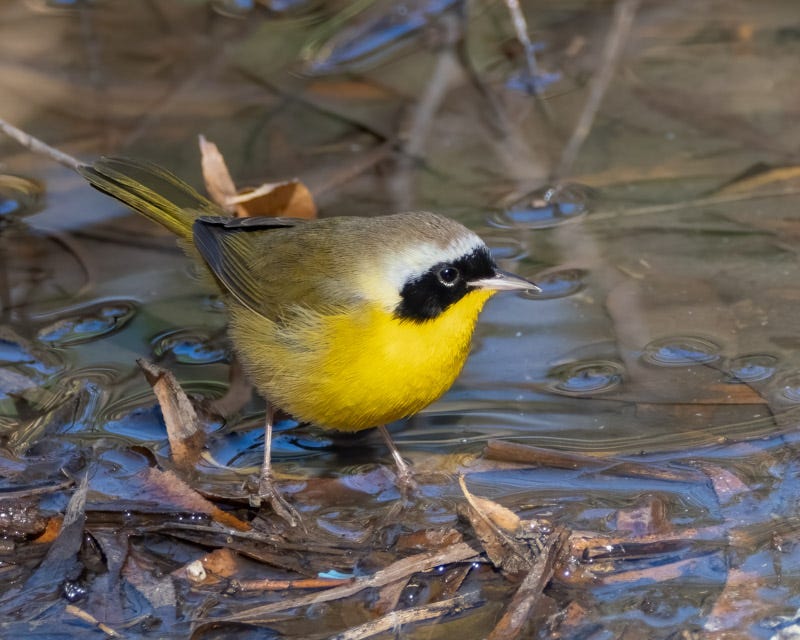
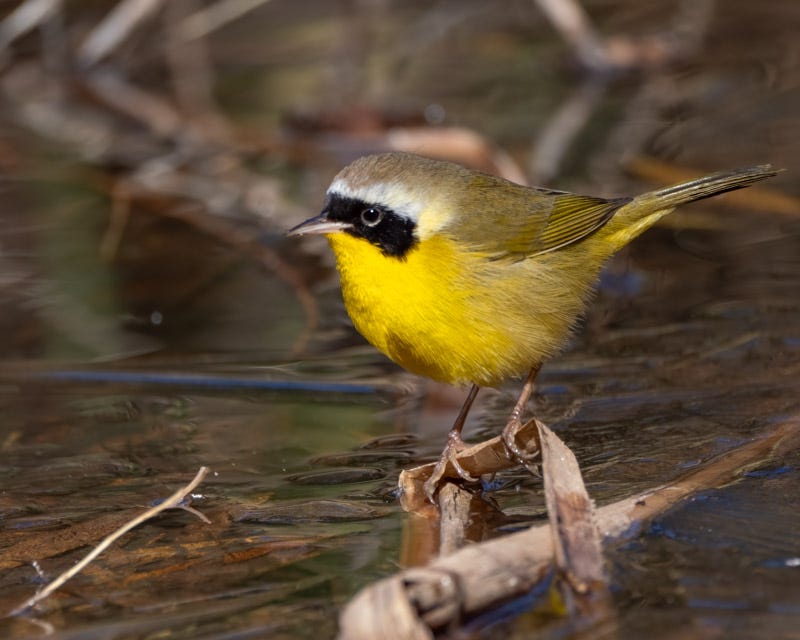

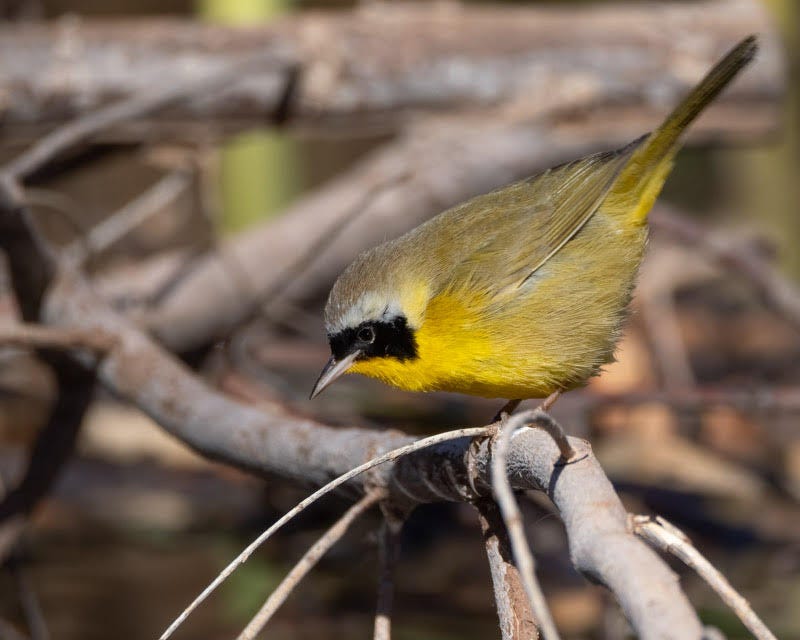
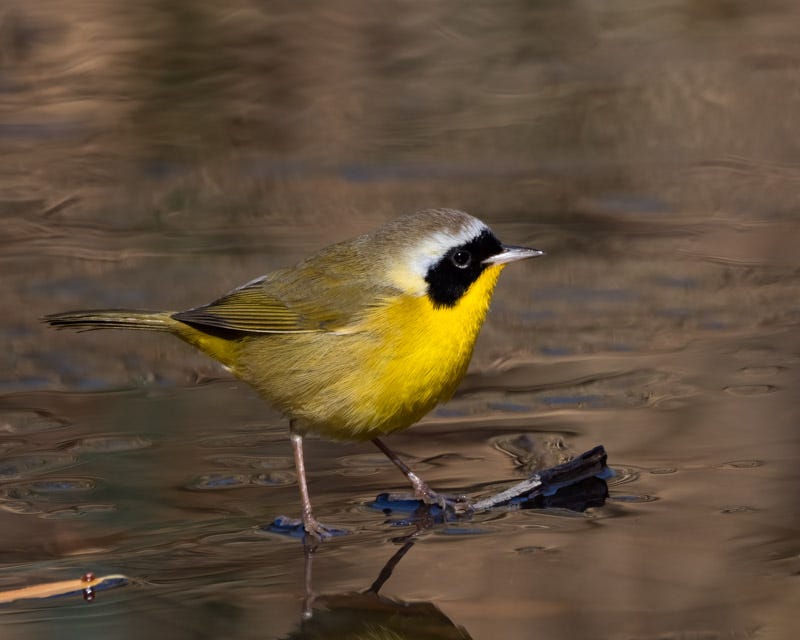
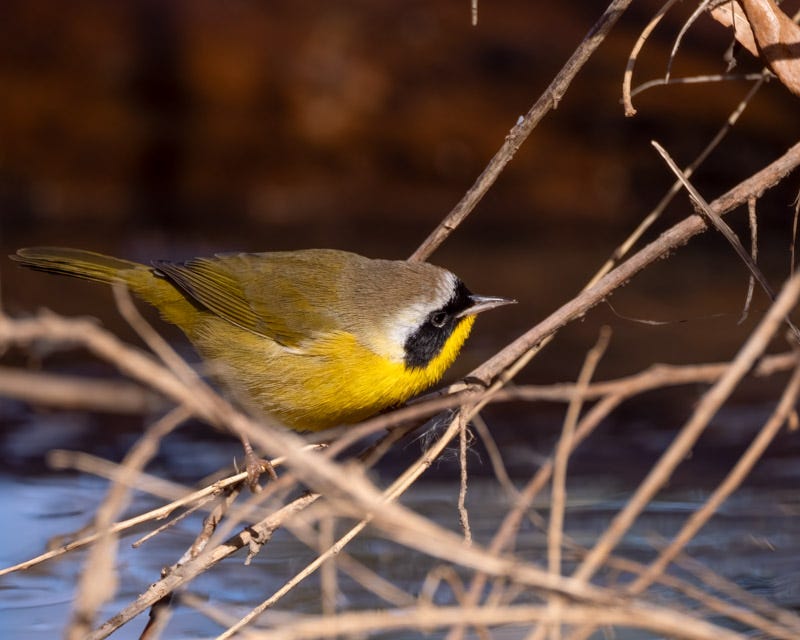
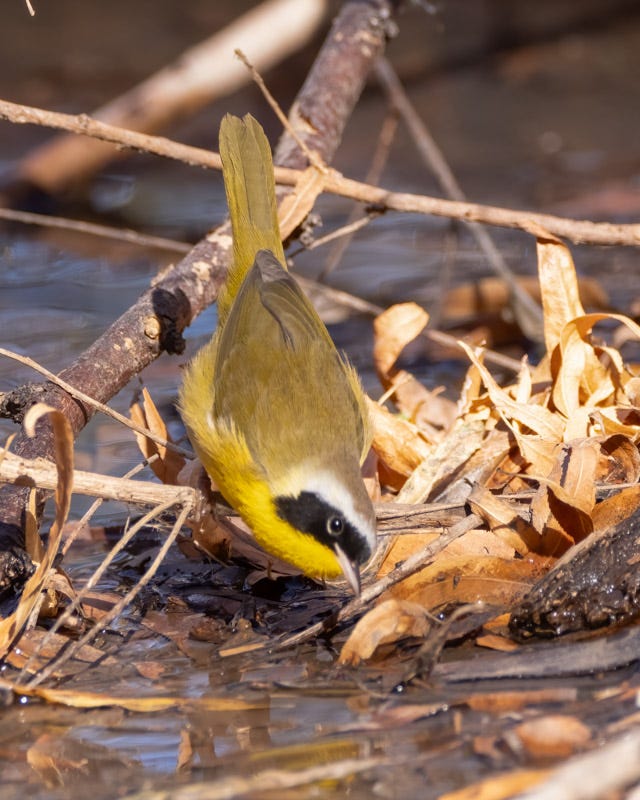

Excellent! And well deserved given the time you spend in the field seeking opportunities like this. What a beautiful collection of portraits of a hard-to-photo "common" bird. And thanks again for brightening my day with yet more sunshine.
Beautiful photos.